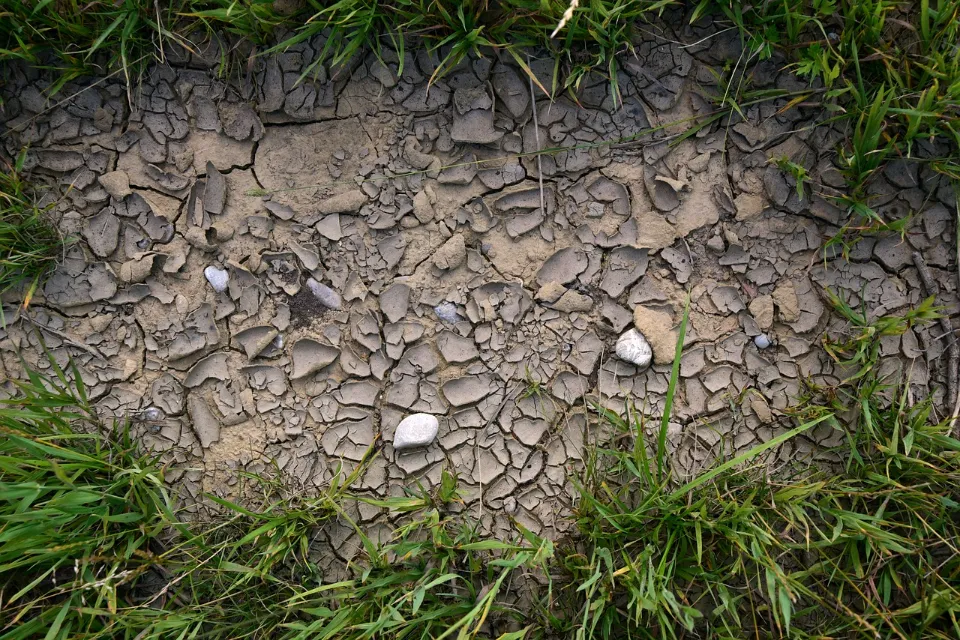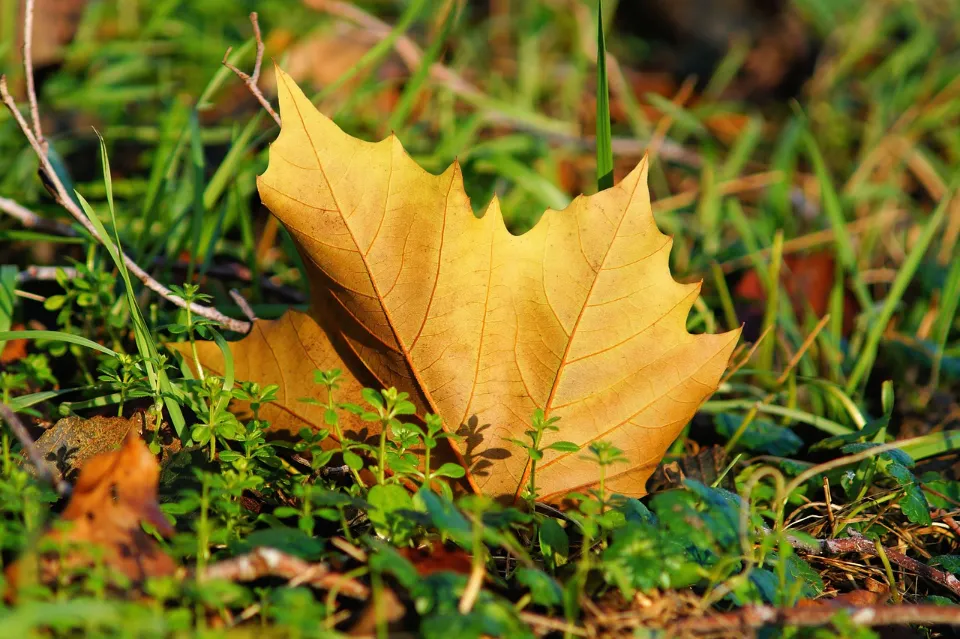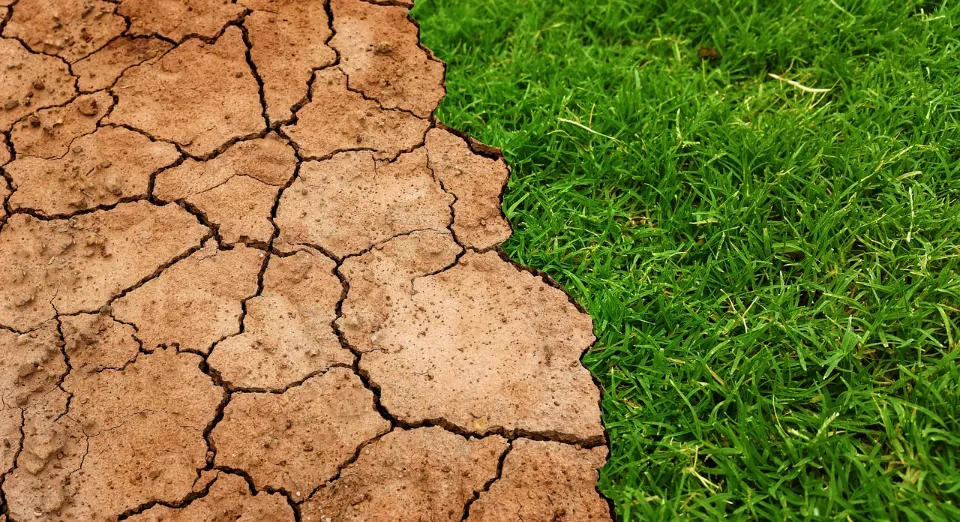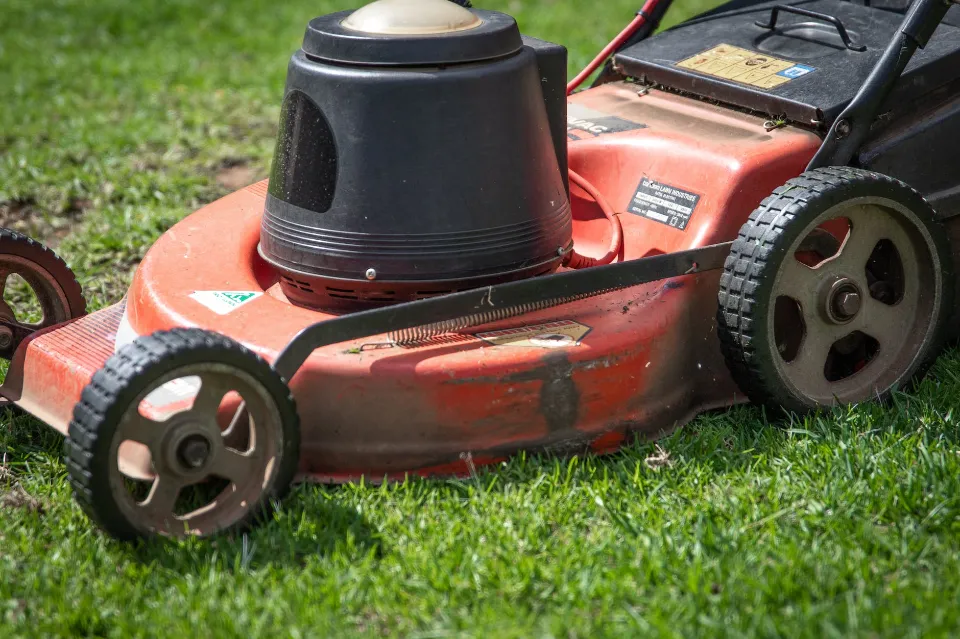Your lawn may begin to become uneven over time for a number of reasons, including settling or poor drainage problems. Actually, leveling your lawn has lots of advantages; you don’t have to completely tear it all out.
Sand or a sand-soil mixture are the two primary options for a top dressing for leveling lawns. For leveling purposes, pure sand is the quickest and easiest.
Why is It Important to Have a Level Lawn?

Because it provides a much more usable surface to walk on, a smooth, even lawn devoid of bumps or depressions is important. Everything from playing soccer, croquet, or bocce ball to simply running around will be safer and more enjoyable. For kids and adults alike.
Additionally, a level lawn is healthier and simpler to maintain. You’ll get a better cut because your mower won’t scalp the grass, and because it won’t be bouncing around as much, you can mow more quickly. Additionally, it’s uncomfortable to mow over uneven ground (much like driving over potholes in a car). Low spots are of particular concern because as the tires pass over them, the level of the mower blade also drops, plunging it into the higher spots and cutting the grass there too low. Drainage is the final benefit of having a level lawn. Holes and low spots tend to collect water in pools, which increases chance of lawn disease.
Also Read: How Often Should You Apply Sulfur to Lawn – 2023 Guide
How to Level Your Lawn
It might take a little more work to level out your lawn if it has numerous peaks and valleys. You can still attempt to fix it yourself, but don’t be afraid to seek professional assistance if your yard has numerous ruts or deep depressions.
What you’ll need:
- Lawn mower
- Garden rake or lawn leveling rake
- Shovel
- Topsoil
- Compost
- Fine sand
- Aerator
- Grass seed or sod
Step 1: Mow
Mow your lawn briefly at first, but not so briefly as to scalp it. Leaving the grass blade stems exposed will cause your lawn to quickly dry out. Mowing at a shorter height allows you to accurately see how uneven your lawn is so that you can determine how much top dressing to apply. The suggested mowing height for your grass can be found here; cut it a little shorter.
Step 2: Dethatch
Now that you’ve mowed your lawn pretty close to the ground, you can examine how much thatch has accumulated over time. Thatch is a layer of dead vegetation, earth, twigs and other types of debris located on the ground below your grass. 0.25–0.50 inches of thatch is okay, but anything more than that amount will prevent the grass from obtaining nutrients, water or oxygen.
If you decide you need to dethatch, remove it by running a thatch rake over the surface to pull it up.
Step 3: Broadcast Soil Mix
You can now begin making applications of topsoil mix to your lawn by broadcast spreading it over your lawn with a shovel. When you top dress a lawn, you will spread a mix of soil or soil compost and fine sand.
You should first start by mixing the topsoil and sand so that it is fully blended. Rich nutrients that are essential for the health of your lawn can be found in topsoil of high quality. Since sand doesn’t compact easily, it will aid in preserving a level yard over time, whereas soil and compost contain beneficial nutrients that promote the health of your lawn.
The applied organic material will eventually work its way into your soil profile and amend/improve the quality of your soil.

Step 4: Evenly Spread Topsoil Mix
Spread the mixture evenly on your soil by raking it out. Apply leveling mix to the low areas you want to level out up to 0.5 inches thick. If you see that you need more top dressing, repeat this process when your grass begins growing over the top dressing or when the top dressing mix is no longer visible. Be sure to never completely cover your grass blades with soil because it needs sunlight to grow.
Step 5: Water Your Grass and Topsoil
After the ground has been sufficiently leveled with topsoil mix, it is a good idea to irrigate the ground that same day. Air pockets or unstable areas are frequently invisible from above ground. By watering the lawn, you can anticipate how level your lawn actually is by allowing the soil to settle once more.
If some areas still appear to be uneven, return and add more topsoil or try rearranging some soil to restore a level, smooth surface. Don’t over-irrigate to the point where your soil becomes muddy.
The Benefits of Applying Topsoil
The best way to level out the landscape is to add topsoil or top dressing to your soil, but it also acts as an amendment! When you add organic matter to your topsoil mix, it works to improve the soil’s health—especially if you have a clay-like soil.
If you have a lawn that struggles with drainage, it also helps to improve the soil’s structure and water-holding capacity. The existence of an uneven lawn may occasionally be caused by drainage problems.
When to Grade a Yard

Consider leveling a backyard or front yard when water runs into the street or puddles, when it looks unsightly, or when you have trouble stepping or moving over lumps and dips. The underlying cause of the lumps and low spots in the yard will help determine when to level it. If, for example, the lawn has compacted in areas because of foot traffic such as from daily trips to the treehouse, consider leveling and even creating a hardscape path before peak “club season” for the kids.
But in the majority of situations, spring is the best time to carry out the steps listed below. This is when warm-season grass is just coming out of dormancy. However, if the soil is still wet from snowmelt or spring rains, wait until it dries out before following the instructions below. Similarly, fix issues with the yard’s grade during periods of good weather before checking your work the following time it rains.
Final Thoughts
Once you understand how to level a yard, it is a worthwhile and comparatively easy project to take on in the spring. By preventing water waste and water damage to the home, ground leveling can give your lawn some new life and curb appeal.
Lawn lumps and low spots should be addressed using the methods mentioned above after determining the cause. Fix the slope if you see water flowing toward the foundation of your home. Your yard should be easier to maintain once you have leveled it.

FAQs About How to Grade a Yard
Yard leveling doesn’t have to be tough, but knowing the steps involved—and tips that make the job easier—always help! Here, we’ve elaborated on a few with the responses to frequently asked questions.
How Do You Fix An Uneven Lawn?
It is a fairly simple procedure once you know how to level the ground. Mow the grass first, then look for dips. Compost, sand, and topsoil should be used to fill them. Before laying down a thin layer of the same mixture and replacing the sod, dig up the sod in high spots and remove some of the soil from there. Top-dress the entire lawn with a ¼- to ½-inch layer of topsoil, and then water. After the soil settles, you might need to top-dress once more.
When Should I Level My Lawn?
The ideal season to level your lawn is typically spring. Warm-season grass is coming out of dormancy, and any plugs of sod you dig up and replant after leveling stand a better chance of surviving in spring temps before the heat of summer. Put off leveling until the ground dries out if there has been significant snow melt or spring rains because you risk doing more harm in muck and mud.
How Do I Level My Whole Yard?
Mow the grass on lawns to fill in low areas and to remove lumps or high areas. After leveling the lawn, replace the grass in its original location before applying a topdressing of compost that is ½ inch thick and raking the lawn with the back of a bow rake to level it. To level out uneven flagstone or paver paths, use leveling sand. You may need to hire a yard-leveling specialist to properly slope the property if your entire yard has a grade issue.







